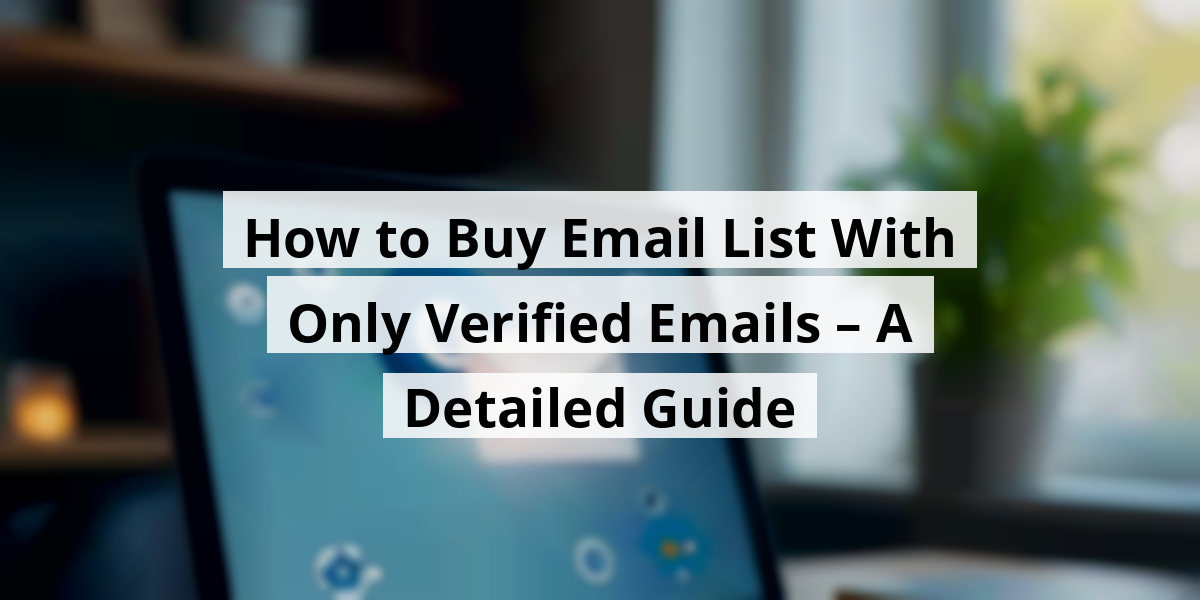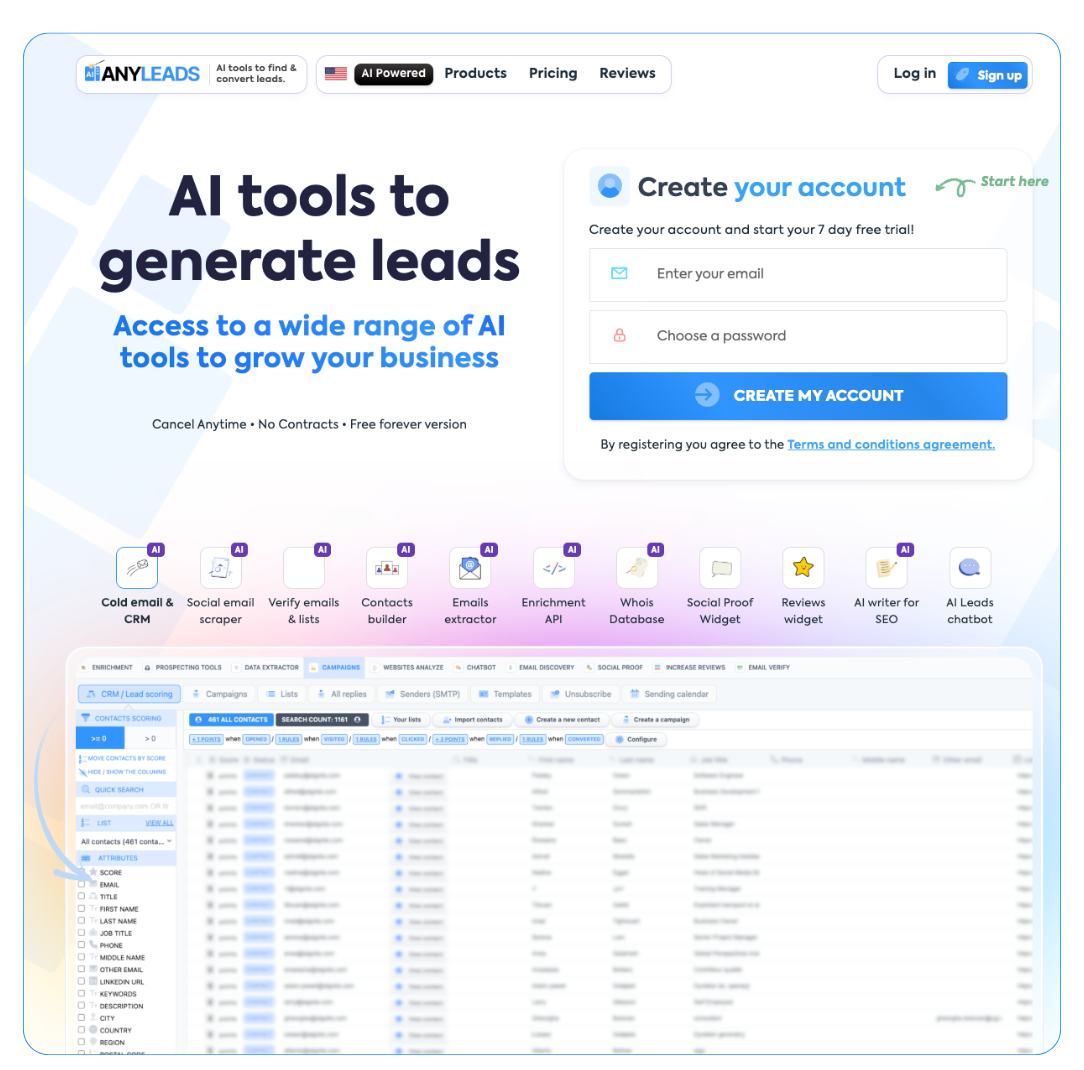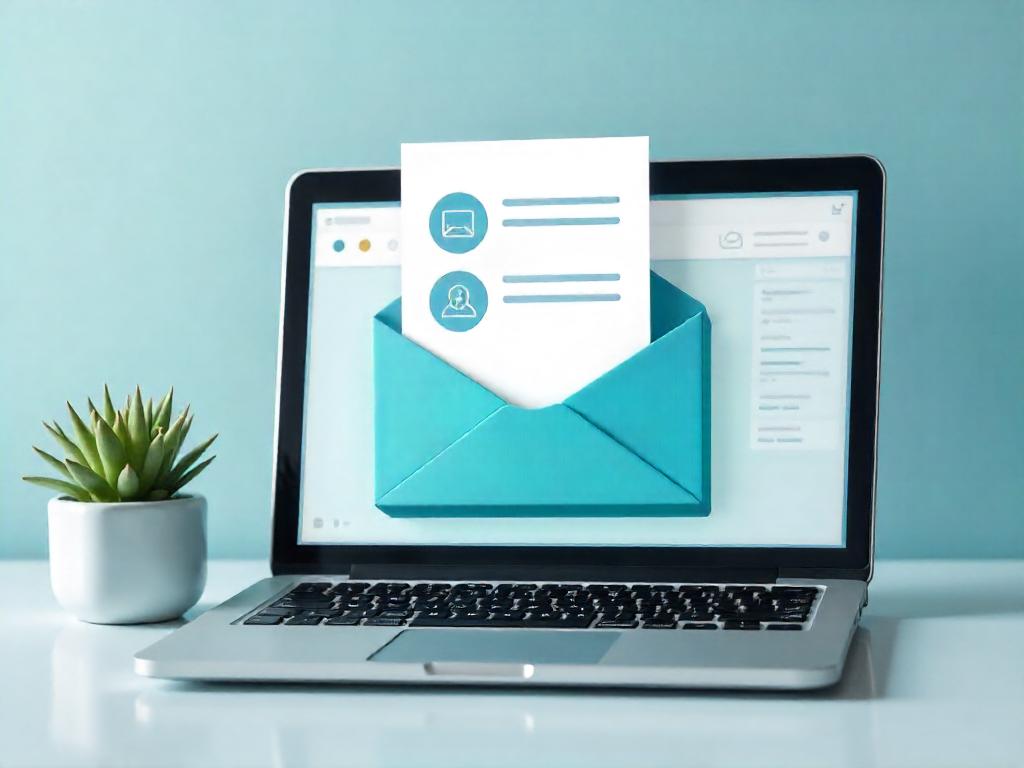 LIMITED SPOTS
All plans are 30% OFF for the first month! with the code WELCOME303
LIMITED SPOTS
All plans are 30% OFF for the first month! with the code WELCOME303

 LIMITED SPOTS
All plans are 30% OFF for the first month! with the code WELCOME303
LIMITED SPOTS
All plans are 30% OFF for the first month! with the code WELCOME303


Now we are going to talk about why it's crucial to make sure our email addresses are as reliable as grandma's cookie recipe. You wouldn’t use a recipe that calls for unicorn tears, right? Let’s dig a bit deeper into verified emails.
Let's face it: sending emails to contacts that don’t even exist is like shouting into a void. Using verified emails is like playing it safe at a game of poker—nobody wants to be the one holding a pair of twos when the stakes are high! These emails are like a good friend who actually picks up the phone. They’re real, active, and most importantly, they will engage with us.
When we craft a marketing campaign or launch a sales outreach plan, having verified addresses can work wonders. Imagine sending an email and seeing those open rates rise like a loaf of bread in the oven. It's music to our ears and champagne to our endeavors. The chances of landing in the right inbox skyrocket, ensuring that our messages actually get read, not buried under a mountain of junk mail.
However, if we’re not careful and use unverified emails, we’re essentially throwing a dart blindfolded. They might be outdated, nonexistent, or even worse—spam traps. It’s like stumbling into a dark alley we thought might lead to a shortcut, only to find ourselves at the end of a very long line for a very bad burrito!
Here’s a quick rundown of why we should prioritize verified emails:
In a world where every marketing dollar counts and customer attention is fleeting, sending emails to verified addresses is not merely a best practice—it’s a necessity. So let’s tighten up that email list and ensure we’re reaching the real deal. After all, there’s too much at stake to leave our success hanging by a thread—or worse, a scammy email address!
Now we are going to talk about the pitfalls we face with unverified email lists—you know, those tantalizing troves of contacts that promise the moon but often deliver… well, a whole lot of nothing.


Picture this: you’ve crafted the perfect marketing email. It’s like a fine wine, aged to perfection. You hit “send,” visions of leads pouring in dance in your head. But then—BAM! A hefty bounce rate smacks you upside the head! Those unverified emails have bounced back faster than a rubber ball on steroids.
High bounce rates ring alarm bells for email service providers (ESPs). They see those bounce-backs and think, “This sender must be up to no good!” And just like that, your sender score drops faster than a hot potato. Next thing you know, your emails are hitting spam folders like they’re on a mission.
Ah, the delicate art of delivery! If ESPs are raising eyebrows at your bounce rate, they might just classify your domain as suspicious. Imagine sending out a stunning offer only to have it whisked away into the dark abyss of spam. It’s like showing up to a party, and no one lets you in. Not cool, right?
And let’s talk dollars and cents—sending to unverified addresses is like emptying your bank account into a well. Sure, you might get a splash of success occasionally, but more often than not, it’s just wasted effort and resources.
Before we move further into this dizzying realm of email lists, let's consider how to make smarter choices. We want only the crème de la crème—the email addresses that speak to real people, not ghosts in the machine.
So, as we meander through this minefield of email marketing, we should take the road less traveled—the one with verified, reliable contacts. Let’s nurture real leads, not phantoms.
Now we are going to talk about why having reliable data is crucial if you’re considering purchasing an email list. It’s a bit like buying a used car; you wouldn’t want to drive off with a lemon!

The quality of your email list can make or break your marketing strategy. It's like trying to bake a cake with expired ingredients—disaster awaits! A list filled with outdated, inaccurate, or stale data means your emails are unlikely to land where they should, leading to missed chances and a tarnished reputation.
Imagine sending an email to someone who changed their address two years ago. Talk about frustrating! When purchasing an email list, ensuring that the data is fresh is vital. A high rate of undelivered messages not only dilutes your campaign’s effectiveness but can also leave you with a tarnished sender reputation.
A “verified” email is like getting a thumbs-up from the internet. It means the address has been checked and confirmed as active. The process involves several methods to ensure the accuracy of the email data, including:
Skipping these steps is like running a marathon with a shoe on the wrong foot. Higher bounce rates and unhappy recipients await you!
Using a poorly vetted email list can lead to a comedy of errors. Let’s take a look at some of the misadventures that can result:
| Risk | Description |
|---|---|
| Wasted Marketing Resources | Poor data leads to spending money on emails that never reach a real person. |
| Spam Complaints | Sends users running for the spam button. Ouch! |
| Inaccurate Targeting | Reaching folks who aren’t interested is like fishing in a dry pond. |
Now, we’re going to discuss the age-old debate: should we build or buy an email list for our marketing efforts? Buckle up, because this can get bumpy—or should we say, full of email puns!
The decision to build or buy an email list isn't just a walk in the park. It all boils down to what your business needs, how fast you need it, and, let’s be honest, your caffeine consumption for the day. We’ve all been there, staring at our screens, wondering if we should take the plunge or play it conservative. Let’s break this down.
Creating your own email list is like planting a seed and watching it grow. You can scoop up those precious email addresses from:
Buying an email list can be tempting, like finding a cheat code in a video game. Quick and easy access sounds great, right? Well, let’s weigh the pros and cons!
When should we take the plunge to build or buy? Here’s a little cheat sheet for making an informed decision:
In the world of marketing, choosing how to grow your email list is like deciding whether to go for a jog or surf the couch. Either can get you there, just make sure you choose the path that suits your needs best!
Now, let's chat about something that can really deflate your marketing efforts—bounce rates. You know, those pesky instances when your carefully crafted emails just pop back, like a rubber ball that refuses to stick? We’re diving into how these email bounce rates can take a toll on your brand’s image and effectiveness.


Having a high email bounce rate is like inviting people to a party and then forgetting to send them directions. Ouch! When emails fail to land in inboxes—thanks to things like invalid addresses or full inboxes—it doesn’t just sting; it can seriously hurt your brand’s credibility.
If your emails are bouncing like popcorn in a hot pan, guess what? Email Service Providers (ESPs) start to think you're the spammy uncle at the family gathering. When they flag your domain as unreliable, future emails may never reach eyeballs. And that’s a bummer, especially when you’re trying to sell your product or service.
Plus, high bounce rates are a flashing neon sign that your email list might need some serious TLC. If you’re pouring resources into sending messages to ghost emails, you're basically setting your budget on fire. In turn, low engagement comes knocking, leaving you with less opens, fewer clicks, and colder conversions. It’s like inviting guests over but forgetting to serve snacks—nobody’s sticking around!
But this isn't just about tech issues; it spills over into customer trust. Picture this: one of your loyal customers sends an email only to find out your messages went straight to their spam folder. They may start thinking, “Is this brand even real?” And if trust goes down the rabbit hole, it can lead to long-lasting repercussions in competitive markets where relationships matter like gold.
So, what can we do to dodge these bounce-rate bullets? First things first, keep your email list as fresh as grandma’s cookies. Regularly cleaning up your contacts and verifying them can keep that bounce rate down to a bare minimum. Think of email verification tools as your trusty sidekicks in this cleaning adventure.
By keeping things tidy, you’ll protect your sender reputation and supercharge your email campaigns. In the era of digital marketing, where first impressions are everything, let’s make sure we’re not sending invites to a ghost party.
For those of us eager to dive deeper into the world of email marketing and learn ways to keep bounce rates at bay, check out some brilliant resources that spill the beans on best practices. Nobody wants to be the ghost at their own email party, right?
Now we are going to talk about how to track down a CEO's contact details. It might sound like searching for a needle in a haystack, but with a bit of wisdom and the right tools, we can make it happen!
Getting your hands on a CEO’s email or phone number might feel like trying to find Wi-Fi in the wilderness, yet it can change the game for salesfolk and marketers alike. Just imagine being able to skip the lengthy sales cycle and hop right into a conversation that could skyrocket your business!
We can lean on several clever methods to locate a CEO's contact info. First, consider tools like Hunter.io or Apollo.io—think of them as your trusty treasure maps leading to valuable contacts. They come equipped with verified business data, including those elusive C-suite contacts. Plus, they use sharp algorithms to ensure you aren’t banging your head against a wall trying to reach the wrong person.
But hold your horses! We must tread carefully. Think of cold outreach like trying to sneak a surprise party past someone; timing and relevance are vital! It’s not about sending a generic email blindfolded; it’s about crafting a sweet message that speaks to their needs. A sprinkle of humor and a dash of respect can help charm the socks off even the busiest of CEOs!
While many swear by LinkedIn, remember it requires finesse. Scour for commonalities, connect genuinely, and don’t just send a request and run. Think of it like making a new friend; wouldn’t you want to grab coffee before asking them for a favor?
For those hungry for more tips on locating a CEO's digits, we’ve got a treasure trove of wisdom laid out in our detailed blog. It’s a banquet of actionable strategies and cheeky hacks to ensure your outreach isn’t just effective, but also respectful.
So, whether you’re gearing up for a big pitch or just looking to jumpstart a conversation, remember: it’s all about being genuine, relevant, and yes, a little witty. After all, we want them to be eager to pick up that phone!
Now we are going to talk about some nifty ways to snag business email addresses that could truly boost our sales and marketing ventures. Like a good treasure map, these techniques will guide us to exactly where we need to go.

Getting our hands on verified business email addresses is the secret sauce to any effective sales strategy. Think of it as the golden ticket we need to engage those key prospects.
One popular route is using email finder tools, like Hunter.io, which are as helpful as having a Swiss Army knife in our marketing toolkit. These platforms let us search emails based on company domains or specific names, and they even verify that the emails are legit. It’s like having a bodyguard for our outreach efforts. Less time bouncing back emails means more time actually creating connections.
If we’re really serious about accuracy, real-time verification tools are where it’s at. Tools like SalesIntel check against active servers, confirming that inboxes are open for business. Imagine sending an email, only to realize the recipient’s inbox is crammed with spam from a cat video compilation—awkward!
We can even take our chances with some manual verification. By using standard naming conventions like first.last@company.com, we can hit the bullseye. Pair this with some sleuthing on LinkedIn, and we can find our way to decision-makers like old-school detectives.
And let’s not forget about B2B platforms that serve up juicy insights beyond just email addresses. They offer everything from firmographics to current intent data, which gives us the edge when searching for the right person at the right moment. No more shooting fish in a barrel!
Here’s a handy dandy list of email finder tools worth checking out:
And if we really want to get into the nitty-gritty, we recommend our detailed blog for even more tips. It’s packed with strategies that'll help us fine-tune our lead generation efforts—perfect for those moments when we want to kick it up a notch!
| Tool | Feature |
|---|---|
| Hunter.io | Find email addresses by domain or name |
| VoilaNorbert | Real-time email verification |
| SalesIntel | Advanced validation against active servers |
| ContactOut | LinkedIn email scraping |
| RocketReach | Find emails and phone numbers |
Now we are going to talk about how to create a successful email list that actually performs well. It's not just about collecting addresses, folks; it’s about building connections and driving conversions. So, let’s roll up our sleeves and get to the meat of it!


Building that email list? It's like preparing a fine dish. You can't just throw everything into a pot and hope for the best! We have to plan this with some strategy. Think of segmentation as slicing our ingredients to ensure each flavor shines. When we organize contacts into groups—like based on company size, industry, or even those sneaky little behaviors that signal what they’re interested in—our messages become more spot-on. This way, our emails won’t end up in the dreaded spam folder, looking guiltier than a raccoon caught raiding the trash.
Now, let’s chat about personalization. Isn't it lovely when someone remembers your name? Personalized emails do just that, making recipients feel like they’re getting a special sending from their bestie rather than a generic message. It’s about addressing their specific needs and challenges. Tailor-made email campaigns are like having a coffee specifically brewed just for you—way better than the last-minute over-sugared option!
If we’re grabbing those purchased email lists, hold your horses! We’ve got to make sure they’re squeaky clean and verified. A clear list means lower bounce rates. Think of a bounce rate like that awkward friend who always invites themselves and realizes they’ve wandered into the wrong party. Let’s keep our lists filled with folks who actually want to mingle!
Integrating our list with CRM tools is a smart move. This little gem will help us track interactions, score leads, and even send timely follow-ups without us pulling our hair out in despair. It’s like having a well-organized, super-efficient office assistant on speed dial, making sure no potential client slips through the cracks!
Lastly, when we manage our purchased lists, it’s essential to be patient. Think of it like raising a plant. We can’t dump water on it every day and expect it to bloom overnight! Gradually warming up those email addresses and nurturing leads pays off. By combining segmentation, personalization, and solid management practices, we significantly boost our chances of hitting those conversion goals.
For a deeper dive into these strategies, let’s hit the books or articles that share their wisdom on building an effective email list. Who knew email could have so much flavor?!
Now we are going to talk about effective ways to grow your email marketing list. Expanding this list is like baking a cake: we want the right ingredients in the right amounts to make something that doesn’t just look good but also tastes great!
First things first, we have to remember that expanding your email marketing list isn't just about cramming thousands of emails into a single spreadsheet. It’s more about keeping it quality over quantity—unless we’re talking about pizza toppings, then it’s quantity every time!
We can form partnerships with email list providers who offer reliable and validated data. Think of them as the sous chefs in our kitchen—helping us whip up something delicious without the risk of sending our brand into a tailspin of bounce rates and complaints. Nobody wants to open their inbox and find spam that could put a package of expired hot dog buns to shame!
Now, aside from buying lists, let’s sprinkle in some organic growth techniques, shall we? Here are a few tried-and-true ideas:
Each method not only attracts new faces but also nurtures an engaged audience. Imagine inviting friends to a party who actually show up and not just those distant acquaintances—yikes!
On top of that, we cannot forget to keep our email list clean. It’s like tending to a garden; if we let the weeds grow, they’ll choke out the good plants! Employ tools that help verify new leads, sifting out duplicates and monitoring the overall health of our list. With a clean list, we can avoid those pesky deliverability issues and keep our sender reputation shiny, just like a newly polished car!
Add in a mix of verified contacts, and watch as open rates rise, engagement soars, and the returns on our email marketing efforts start to look less like pennies from the wishing well and more like actual treasure!
For those eager beavers wanting more details on how to effectively amplify your email marketing list, don’t hesitate to check out our blog filled with strategies and best practices. Trust us, it’s worth the read!

